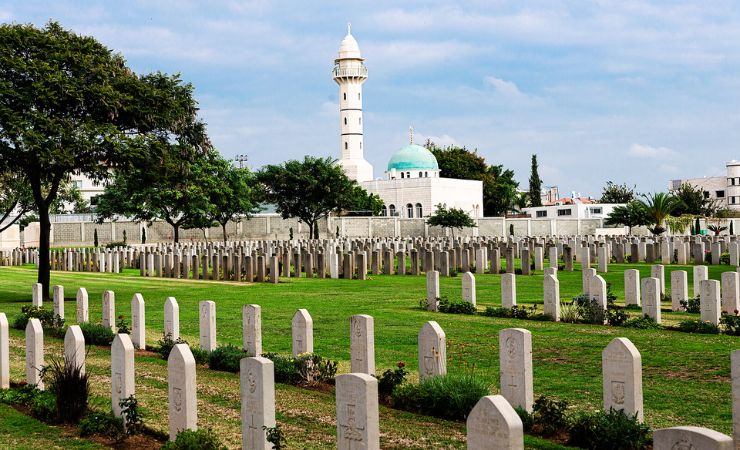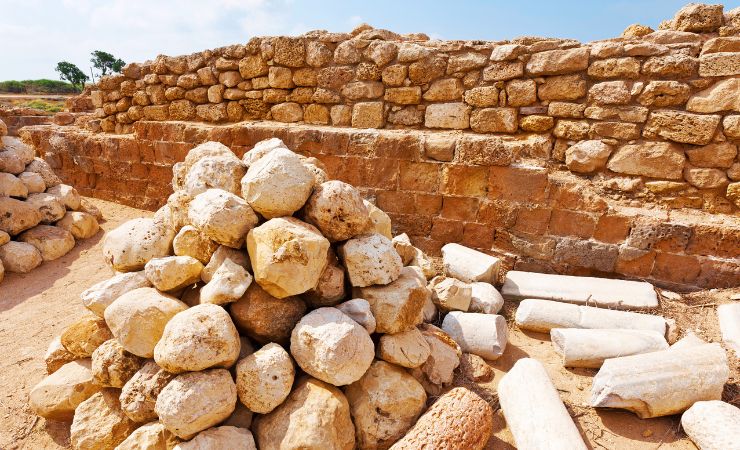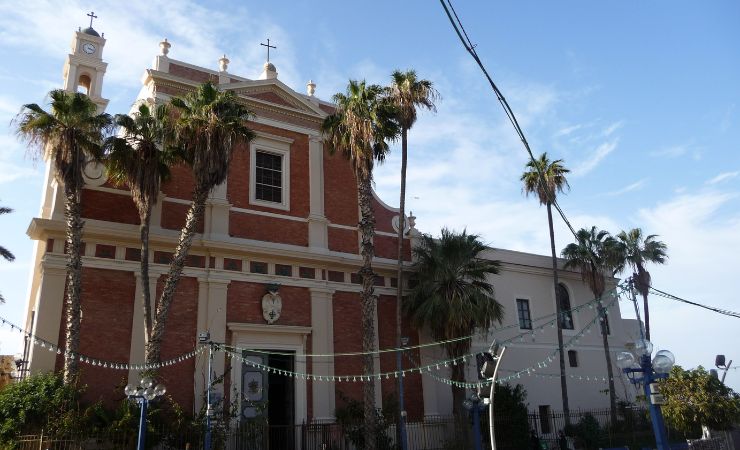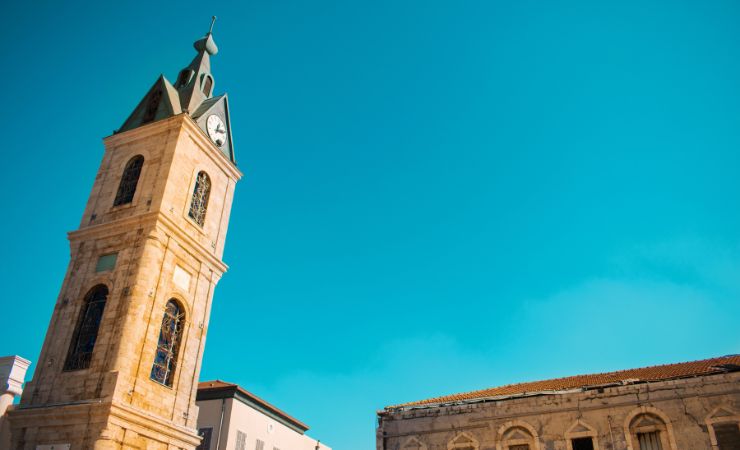Ramleh War Cemetery: Commonwealth Memory in the Heart of Israel
The Ramleh War Cemetery is one of six British burial sites established in Israel after World War I. It is the largest cemetery for Commonwealth forces in the country serving as a significant memorial for fallen soldiers from numerous nations who served the British Empire.

Location of the Ramleh War Cemetery
The Ramleh War Cemetery is located in Ramla, Israel. It lies approximately 2 km north of the town, on a plain looking towards the hills of Judea.
Historical Context
The Ramleh War Cemetery was established during the First World War. Ramleh, known today as Ramla, was captured by the 1st Australian Light Horse Brigade on November 1, 1917. Starting in December of that year, Field Ambulances and later Casualty Clearing Stations were stationed in Ramleh and nearby Lydda. These medical units initiated the cemetery’s use. Over time, additional graves were relocated to the site from various battlefields and military cemeteries in the region.
The cemetery remained active throughout the British Mandate period in Palestine, including during the Second World War, and was used until early May 1948. During World War II, it served personnel from the Ramla Royal Air Force Station as well as patients from several Commonwealth military hospitals.
During the Second World War, a law was passed that made the British government responsible for the burial of fallen soldiers from the British Empire who died from World War I until the end of the Mandate in 1948. In recognition of the British Empire’s role in the defense and liberation of Palestine, the municipality of Ramla granted the cemetery grounds to the United Kingdom in perpetuity.
The original layout of the cemetery was designed by Sir John J. Burnet. In the 1950s, it was significantly modified by Alan Stewart following the addition of World War II graves.



British Military Cemetery Layout
The British Military Cemetery in Ramla follows a standardized design. The graves are arranged in neat rows on maintained lawns, with red rose bushes planted along the graves. The gravestones follow a consistent structure, with differences only in the inscription, the symbol of the soldier’s military unit, religious affiliation, and the design of the upper portion of the stone, which varies by country of origin. A notable exception are the graves of French soldiers, which are marked with crosses instead of the standard design.
Next to the main section of the British Military Cemetery is a separate area where Hindu and Muslim soldiers are buried, in accordance with their religious burial customs, which did not permit burial in the main section.
Notable Graves and Memorials
The Ramleh War Cemetery contains a total of 5,887 burials. These include 3,300 Commonwealth burials from World War I, of which 964 are unidentified, and 1,168 from World War II. In addition, there are 892 graves of soldiers from other nationalities who served in both world wars, along with 525 non-war burials. In total, the cemetery commemorates 5,731 fallen soldiers from 57 nations. Among them are 30 individuals identified as Jewish.
One of the most visited graves is that of Private Harry Potter, who served in the Worcestershire Regiment under the number 5251351. He died in July 1939 while serving in British Mandatory Palestine. According to records, he joined the British Army before turning 17 by lying about his age. He worked primarily as a driver and signed his final letter home using the nickname “Crash Harry.” He was stationed mostly in the Hebron area and was killed near Hebron during the later stages of the Arab Revolt that began in 1936. Interest in his grave increased due to his name, which he shares with the fictional character created decades later.
Another significant burial is that of Neil Primrose, a British politician and soldier. The cemetery also holds the graves of British sergeants Mervyn Paice and Clifford Martin, who were executed by the Irgun in 1947 as a reprisal for the hanging of three Irgun members by the British authorities. The grave of a grandson of Baron Edmond de Rothschild is also located here.
The British Military Cemetery includes two formal memorials:
- The Ramla 1914–18 Memorial, erected in 1961, honors over 300 servicemen from the Commonwealth, Germany, and the Ottoman Empire who were originally buried in cemeteries across Israel. Their original burial sites could not be preserved, and only 74 of the individuals commemorated here are named.
- The Ramla 1939–45 Memorial commemorates 28 Jewish and non-Arab servicemen from the Second World War and six members of the Police Force who died in non-combat situations. Like the earlier memorial, it honors those whose graves elsewhere could not be maintained.
Additional Information
- November 1, 1917: Ramleh (now Ramla) is occupied by the 1st Australian Light Horse Brigade during World War I.
- December 1917 onwards: Field Ambulances and later Casualty Clearing Stations are posted at Ramla and Lydda, beginning the use of the area as a cemetery.
- November 11, 1917 (and surrounding Sundays): An official ceremony is held annually at the Ramleh War Cemetery on the Sunday closest to this date, commemorating the end of World War I.
- May 6, 1927: The Ramleh War Cemetery is unveiled.
- World War II (1939-1945): The Ramleh War Cemetery is used by the Ramla Royal Air Force Station and various Commonwealth hospitals. The British government is made responsible for burying fallen soldiers of the British Empire from WWI until the end of the British Mandatory Period.
- 1947: British sergeants Mervyn Paice and Clifford Martin are hanged by the Irgun and subsequently buried at Ramleh War Cemetery.
- 1948: The British Mandate in Palestine ends. The Ramleh War Cemetery is in use until the start of May 1948 for British burials.
- 1950s: The Ramleh War Cemetery is extensively remodelled by Alan Stewart following the addition of 1939-45 war graves.
- 1961: The Ramleh 1914-18 Memorial is erected within Ramleh War Cemetery to commemorate over 300 Commonwealth, German, and Turkish servicemen buried in inaccessible cemeteries elsewhere in Israel.
- The Ramleh 1939-45 Memorial is erected within Ramleh War Cemetery to commemorate 28 Jewish and non-Arab servicemen and six non-war casualties of the Palestine Police Force buried in inaccessible cemeteries elsewhere in Israel.
Nearby Sites
- The White Tower (Ramla): A 14th-century Mamluk minaret offering panoramic views of the city.
- Pool of Arches: An underground 8th-century water reservoir where you can paddle boats through ancient stone arches.
- Great Mosque of Ramla (Al-Omari Mosque): Originally built as a Crusader church, later converted into a mosque with striking Gothic architecture.
- Lod Mosaic Center: Home to one of the most stunning Roman mosaics ever found in Israel, dating back to the 3rd century.
- Church of St. George (Lod): A significant Christian site believed to house the tomb of St. George, revered in multiple faiths.



